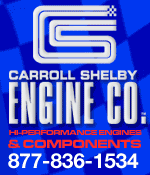dallas_,
Torque converter stall speed is a bit of science with maybe a pinch of voodoo

My engine produces probably 350-400 ft-lbs of torque at 2000 rpm, the car weighs 3100 pounds and it has a 2.88 rear axle ratio. It can spin the tires if I twitch my right foot at any speed up to and over 100 mph, using 200 wear rating tires which are pretty sticky -> Nitto NT05s.
The engine idles at 650 rpm so a low stall converter doesn't make the car try to go forward at stoplights very much at all.
So I guess the answer - as usual - for your case is: it depends.
You need to consider the low speed torque characteristic of your particular engine combo, the vehicle weight, whether the trans is 1:1 in top gear or has an overdrive, and its rear axle ratio.
I remember using a 3.55 behind a similar combo to mine; recall the top gear in a C6 is not an overdrive. It was awful - the tires spun at low speeds and the engine was buzzed up way too high at 70 mph. I switched that car to a 2.73 and it is a delight on the street and on the track.
A friend uses an AOD with an overdrive top gear (not sure of the ratio but it's common to almost all AODs) and a 3.55 and it works very well with a stock stall converter behind a 408 stroker small block with a moderate cam.
Look at some of the converter maker's web sites to see more considerations. Realize, too, that they may not understand exactly what you want, especially if they are drag race oriented. I kinda had to browbeat FTI a little to get them to make the stall as low as I wanted but I'm very happy with the result!
A high stall converter is needed for drag racing but not much else, unless you have a very small engine with almost no low speed torque. Driving such an engine on the street isn't my idea of fun, at least in a daily driver...
Have fun learning about this technology,
Tom

























 Hybrid Mode
Hybrid Mode


